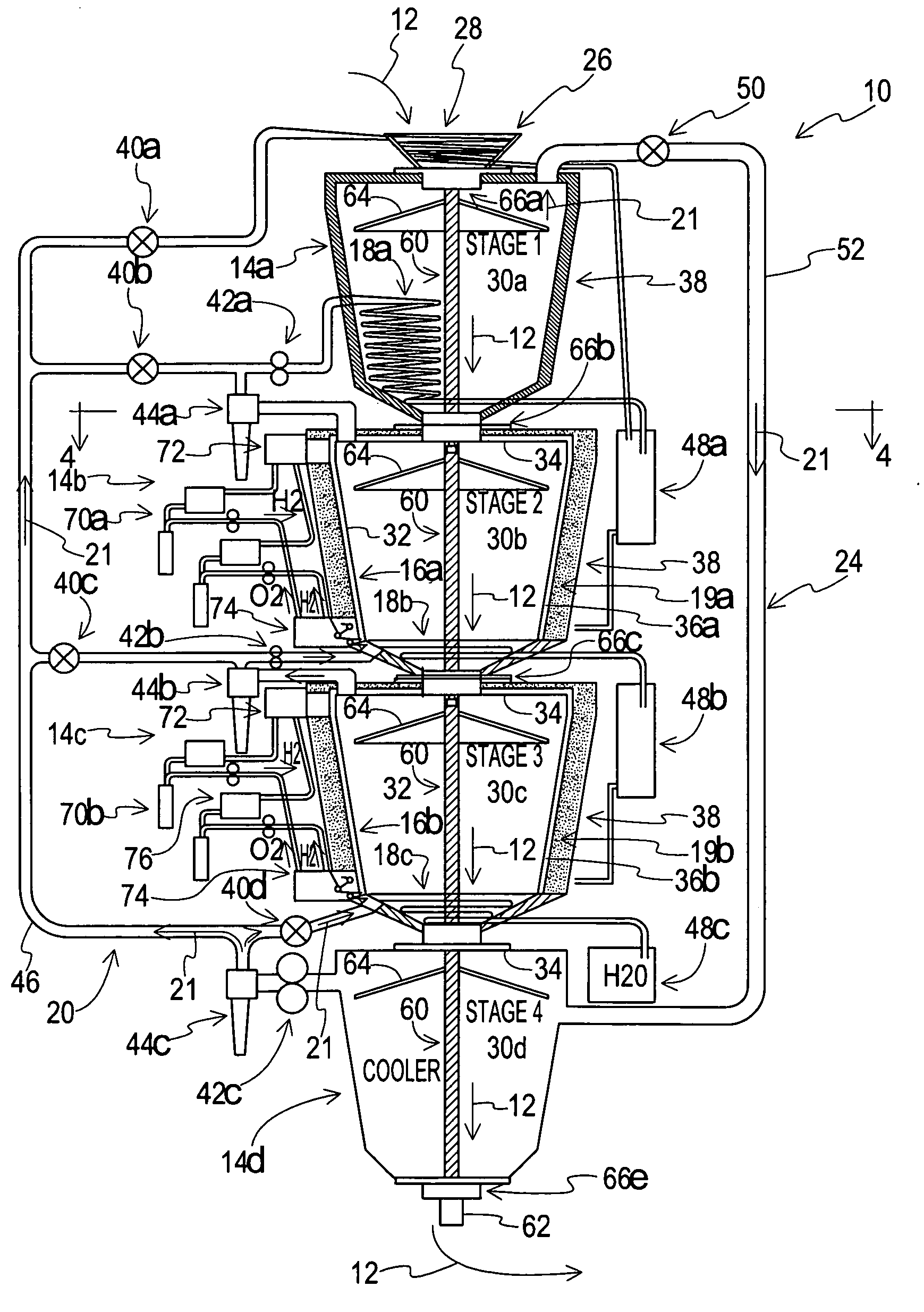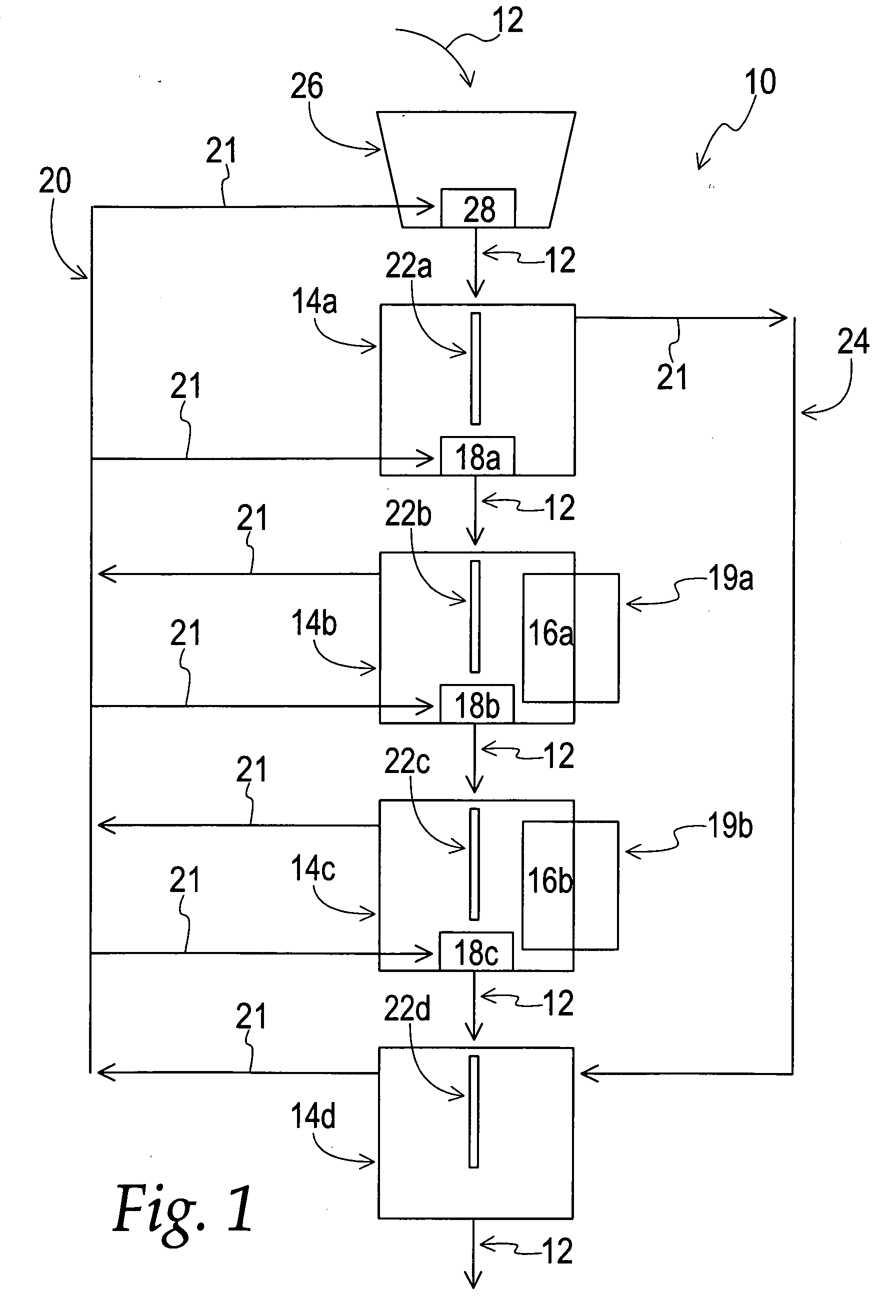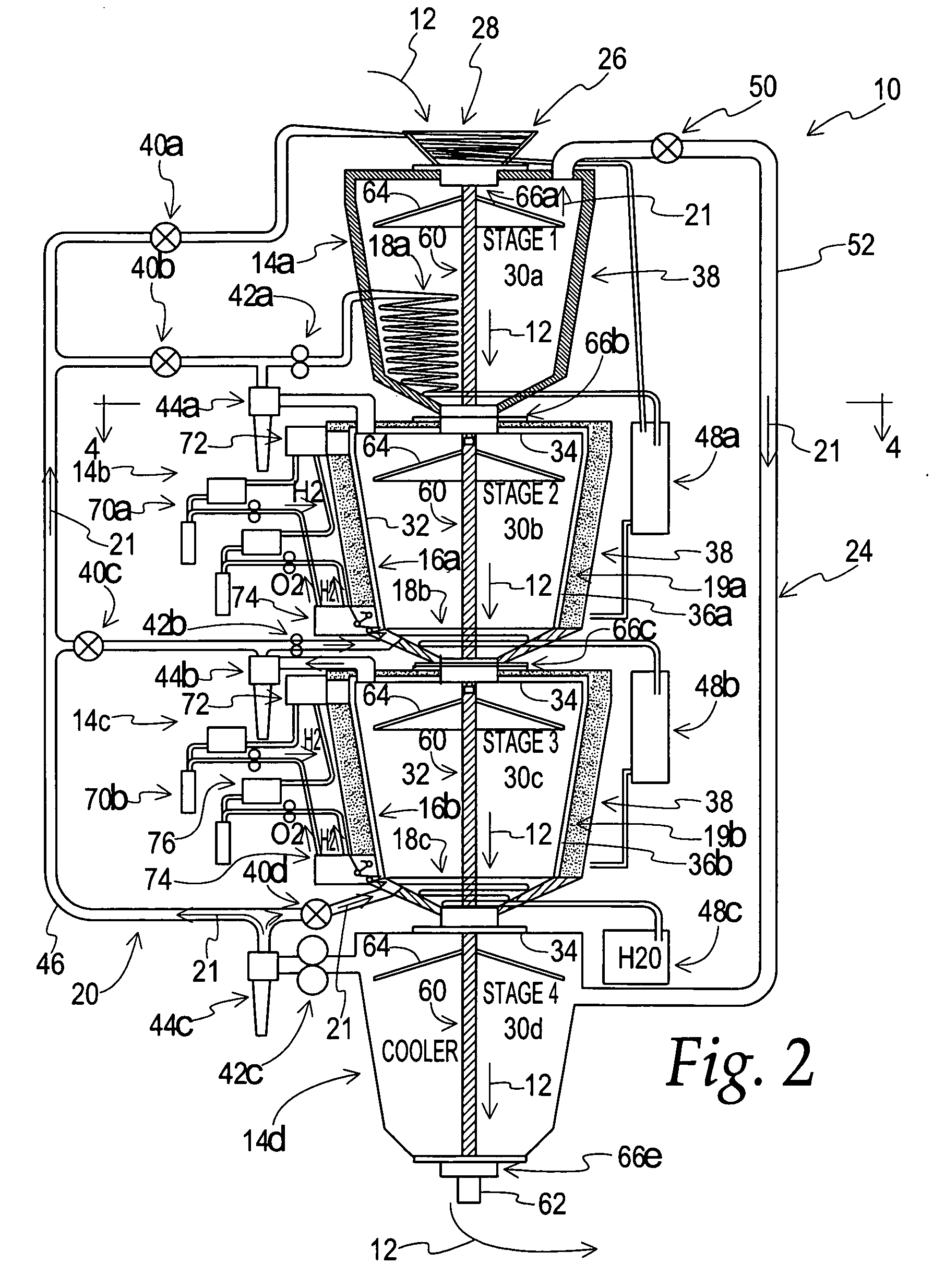Harvest drying method and apparatus
a drying method and equipment technology, applied in drying machines, lighting and heating equipment, furniture, etc., can solve the problems of reducing yield, drying process is typically a grower cost, poor thermal transfer from air,
- Summary
- Abstract
- Description
- Claims
- Application Information
AI Technical Summary
Problems solved by technology
Method used
Image
Examples
Embodiment Construction
[0039]With reference to FIG. 1, a multi-stage harvest dryer 10 is shown for drying an agricultural harvest product 12, such as, for example, corn, sunflowers, beans, seeds, etc. The dryer 10 includes multiple drying stages 14a-14d connected in sequence to dry a volume of harvest product 12 passed from one drying stage 14 to the next. Heat exchangers 16a, 16b, 18a, 18b and 18c are located in the stages 14a-14c to transfer heat to the harvest product 12 in each of the corresponding stages 14a-14c. The heat exchangers 16a and 16b are radiant heat exchangers that efficiently heat the harvest product 12 via radiant heat transfer, with heaters 19a and 19b being provided to maintain the heat exchangers 16a and 16b within a desired temperature range, which in one preferred embodiment is 175° F. to 205° F. The heat exchangers 18a-18c are condensers that efficiently recycle the heat within the system by transferring heat back to the harvest product 12 by condensing water that has been evapora...
PUM
 Login to View More
Login to View More Abstract
Description
Claims
Application Information
 Login to View More
Login to View More - R&D
- Intellectual Property
- Life Sciences
- Materials
- Tech Scout
- Unparalleled Data Quality
- Higher Quality Content
- 60% Fewer Hallucinations
Browse by: Latest US Patents, China's latest patents, Technical Efficacy Thesaurus, Application Domain, Technology Topic, Popular Technical Reports.
© 2025 PatSnap. All rights reserved.Legal|Privacy policy|Modern Slavery Act Transparency Statement|Sitemap|About US| Contact US: help@patsnap.com



